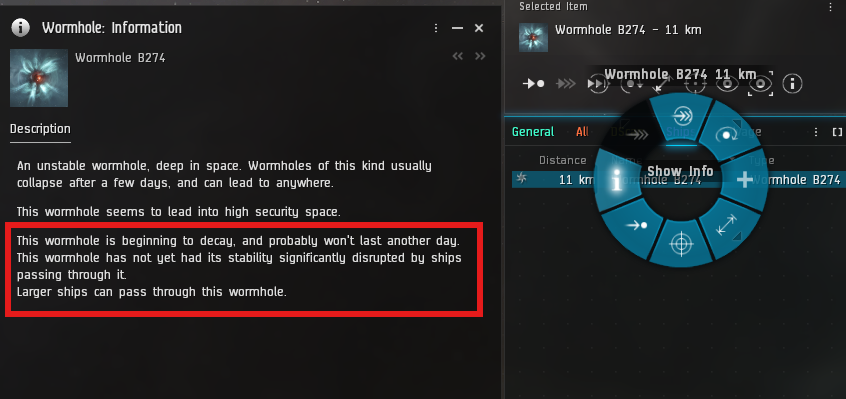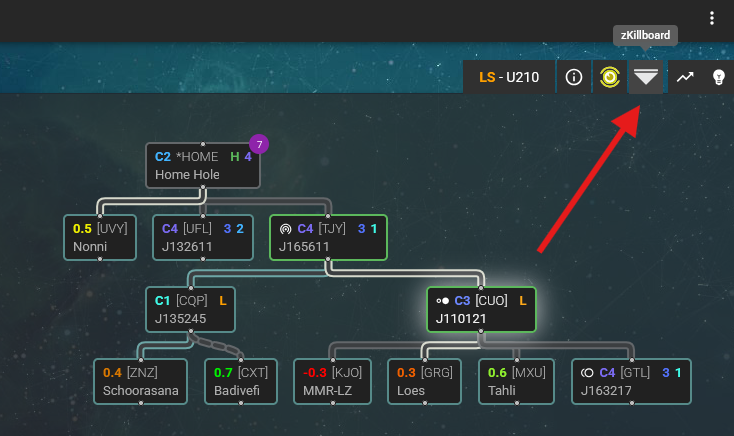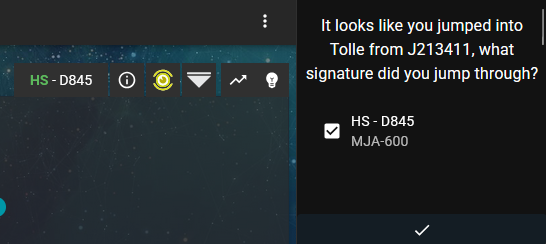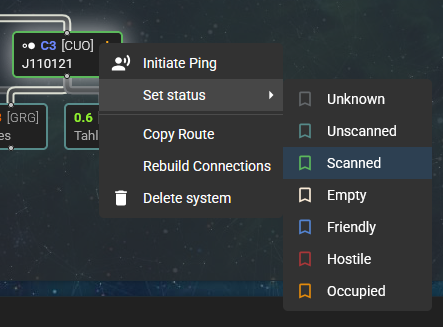Wormhole space is ever-changing, making navigation and intel gathering essential for survival. With that in mind we made this guide with two main objectives:
- First, to teach essential skills like mapping connections, scanning signatures, and maintaining situational awareness using tools like GalaxyFinder;
- Second, to standardize procedures, ensuring that everyone follows a structured and efficient approach.
From entering a new wormhole to building the chain, you’ll learn how to update the mapper, analyze wormhole stability, conduct recon, and apply best practices for scanning and bookmarking—keeping operations clear and coordinated.
¶ The Mapper
Since system connections in J-Space are constantly shifting, wormholers depend on third-party tools to create custom maps—a process known as "building the chain." For this, we use GalaxyFinder.
¶ Building the Chain
We can't just wait for content, we have to make it. And it begins with scanning.
¶ 0. First of all

Before even entering a new wormhole, we all need to have deep muscle memory of checking the information and status of the wormhole—even after it's bookmarked, scanned, and populated on the mapper.
The reason for this is to catch information that can, and will, change.
Within the text marked by the red box in the picture, we can extract information about how long the wormhole is going to last and how much mass it still has.
The most critical pieces of information are checking if the wormhole is end of life (EOL) and if it's on the verge of collapse.
More can be read on the EVE University wiki.
Eventually, you'll get used to the texts, but you can also use this tool that I made.
¶ 1. Entering a New Wormhole:
- Bookmark the wormhole you entered as *Home.
- Cloak immediately and activate microwarpdrive.

¶ 2. Initial System Recon:
- Warp around the system to gather intel.
- Check for activity and potential targets.
- Inspect citadels to see if anyone is docked.
- Check zkillboard for recent activity.
¶ 3. Populate the Mapper:
- Open probe scanner, select all (CTRL+A, CTRL+C), and paste (CTRL+V) into the mapper.
- *When you post it on mapper, it may have old sigs registered. The mapper is going to automatically select those, then you can go ahead and delete the old ones.
¶ 4 . Scanning:

- Begin scanning down signatures.
- Post scanned signatures in the mapper as you identify them.
- CTRL+A, CTRL+C works as well
- It's a good practice to ignore sigs after you populated them on mapper, and bookmarked.
- This way when a new sig pops up you are going to know.
- When you find *Home’s sig, mark it as Return on mapper (House symbol).
- Check Scanning to learn more about it.
¶ 5. Bookmarks
- After scanning a cosmic signature (sig), bookmark it so other FSIDE members can warp to the locations without needing to scan it all over again.
- Check bookmarks to learn our patterns.
¶ 6. Mapper

- Each time you pass through a newly scanned wormhole, the mapper will ask you to confirm from which sig did you go through. Then mapper will populate automatically.
- Set system status accordingly.
